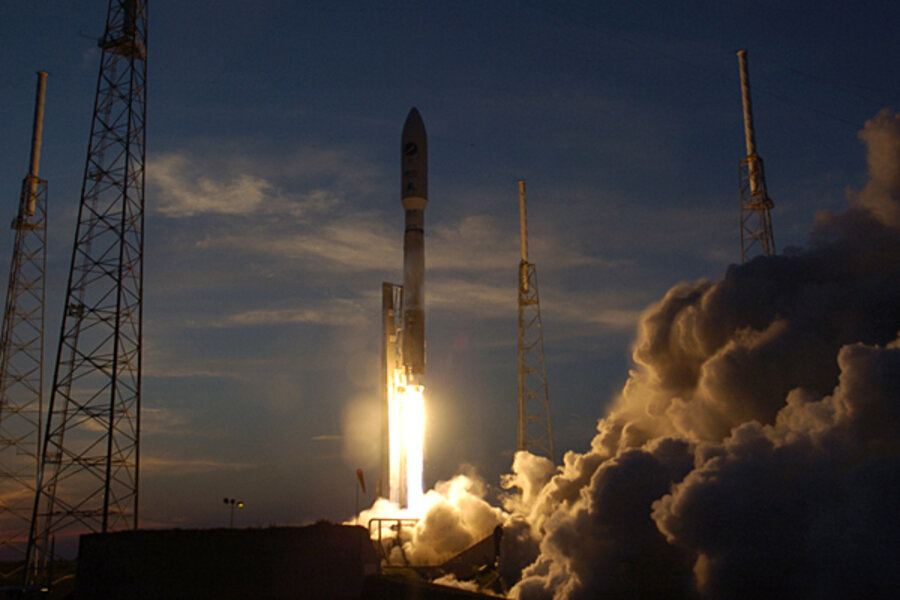X37b space plane launch: first in Air Force's busy space year
Loading...
| Washington
The ability of the US Air Force to operate in the high ground of space may have taken a leap forward on Thursday as the X-37 unmanned spacecraft successfully roared into the heavens atop an Atlas V rocket.
The X37b space plane launch took place at 7:52 PM Eastern time from Cape Canaveral Air Force Station, Florida. The big Atlas rocket’s boosters lit up the twilight in what officials termed a flawless launch.
“This launch helps ensure that our warfighters will be provided the capabilities they need in the future,” said Col. Andre Lovett, vice commander of the 45th Space Wing and the officer who made the firing decision.
IN PICTURES: The X-37 space plane
But what will those capabilities be? That’s classified, for the most part. The Air Force won’t say if the X-37B Orbital Test Vehicle is intended to be a sort of mobile spy satellite, a repair vehicle for other spy satellites, or even a prototype weapon.
Officials stress that it is a means to increase the flexibility of Air Force space operations that already occur. The way they describe the X37b makes it sound like an updated, smaller, robotic Space Shuttle that will be run by the military.
“If these technologies on the vehicle prove to be as good as we estimate, it will make our access to space more responsive, perhaps cheaper, and push us . . . toward being able to react to warfighter needs more quickly” said Gary Payton, the Air Force deputy undersecretary for space programs, in a statement following the launch.
The Shuttle can stay in orbit about 16 days. The X-37, on the other hand, can stay up for 270 days, according to Payton. The current test is likely to push toward that limit, though officials won’t say when they plan to bring the space plane down.
With that kind of endurance, the X-37 could be compared to the Predator drones that now loiter in the skies above Afghanistan and Iran, as well as to the Space Shuttle.
The plane’s builder implied as much in its own statement on the launch.
“The X-37B has the potential to bring to space the flexibility that unmanned systems provide warfighters and combatant commanders today,” said Dennis Muilenburg, president and CEO of Boeing Defense, Space & Security.
Whatever the X-37’s eventual mission, its test launch is part of what promises to be a busy year for new Air Force space systems.
Within a few weeks the Air Force will launch the first of a new generation of Global Positioning System (GPS) satellites, for instance. In July, the Space-based Space Surveillance System, which will track objects in orbit, is scheduled for lift-off.
This summer the Air Force is also set to launch the first of a new generation of EHF communications satellites that, among other things, will be the backbone of presidential command and control for nuclear forces. And later in the year Air Force rockets will place in orbit the first Operational Responsive Space spacecraft, which are small satellites designed to support urgent military needs by taking and transmitting color pictures of areas selected by ground force commanders.
“2010 is an important year for us,” said Air Force deputy undersecretary Payton on Wednesday at a hearing of the House Armed Services Committee’s Strategic Forces Subcommittee.





